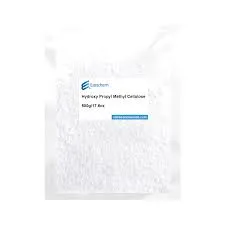
Sep . 22, 2024 02:54 Back to list
hpmc viscosity
Understanding HPMC Viscosity A Key Factor in Pharmaceutical and Food Industries
Hydroxypropyl methylcellulose (HPMC) is a synthetic polymer derived from cellulose, widely utilized due to its unique properties and versatility. One of the critical characteristics of HPMC is its viscosity, which plays a significant role in its applications, particularly within the pharmaceutical and food industries.
What is Viscosity?
Viscosity is a measure of a fluid's resistance to flow. It determines how thick or thin a liquid is. In the context of HPMC, viscosity is influenced by various factors, including the degree of substitution of the hydroxypropyl and methoxy groups, the concentration of the polymer in solution, and the temperature. The versatility of HPMC arises from its ability to form viscous solutions and gels when mixed with water, making it a popular choice for numerous formulations.
Importance of HPMC Viscosity in Pharmaceuticals
In the pharmaceutical industry, the viscosity of HPMC is crucial for the development of controlled-release drug formulations. High viscosity HPMC forms gels that allow the controlled release of active ingredients over an extended period, ensuring that drugs are released gradually, enhancing therapeutic efficacy and minimizing side effects. This is particularly advantageous in chronic disease management, where steady medication levels are essential.
hpmc viscosity

Moreover, HPMC serves as a binding agent in tablet formulations. The viscosity of HPMC can affect the uniformity and consistency of the tablets, influencing their dissolution rates and bioavailability. Formulators often tailor the viscosity of HPMC to achieve optimal performance in various dosage forms, including capsules, tablets, and liquid suspensions.
Application of HPMC Viscosity in Food Industry
In the food industry, HPMC is used as a thickening agent, emulsifier, and stabilizer. Its viscosity is beneficial in modifying the texture and consistency of food products. For instance, HPMC can enhance the mouthfeel of low-fat or gluten-free items, providing a desirable texture without adding extra calories. The ability of HPMC to retain water and form gels contributes to preventing moisture loss in food products, thus extending their shelf life.
Furthermore, the viscosity of HPMC is critical in developing sauces and dressings, where it can create a smooth, uniform product. By adjusting the concentration of HPMC, manufacturers can achieve the desired thickness and stability, ensuring that the product meets consumer preferences.
Conclusion
Understanding HPMC viscosity is essential for maximizing its potential in various industries. Whether it's ensuring the controlled release of pharmaceuticals or enhancing the texture of food products, viscosity plays a pivotal role in the functionality of HPMC. As industries continue to innovate and develop new formulations, the significance of HPMC and its viscosity will likely grow. Researchers and formulators must continue to explore the nuances of HPMC viscosity to optimize its use across different applications, ensuring that they meet desired outcomes and consumer expectations. Emphasizing the importance of this polymer in formulation science underscores its integral role in enhancing product quality in both pharmaceuticals and food industries.
-
tile-bonding-additives-for-stronger-bonds
NewsAug.22,2025
-
construction-grade-rdp-for-wholesale-needs
NewsAug.22,2025
-
trusted-wholesale-hec-partners
NewsAug.22,2025
-
hec-solutions-for-industrial-excellence
NewsAug.22,2025
-
construction-additives-need-hpmc-essentials
NewsAug.22,2025
-
hpmc-versatile-cellulose-ether-for-industries
NewsAug.22,2025







